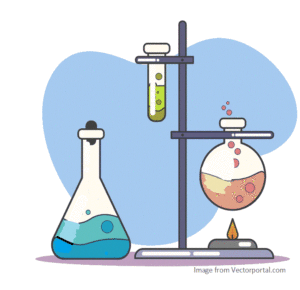Shri. P. C. Ray’s Contribution To The History Of Ancient Hindu Chemistry
A noteworthy researcher, pedagog, altruist, and chronicler Acharya Prafulla Chandra Ray, “The Father of Indian Chemistry” has been recognized for his inevitable bestowals in numerous spheres. He was one of the first “modern” Indian chemical scientists. PC Ray traveled back to India in the year 1888 after obtaining a doctorate in chemistry from the University of Edinburg India’s first pharmaceutical manufacturing organization, the “Bengal Chemicals and Pharmaceuticals” was established by this great scientist.
 In 1896, he declared a vital revelation of a new composition, mercurous nitrate. It was unimaginable that in an age of alchemical and chemical research, no one had located this specific composition, which was entirely stable once one worked out how to form it. He also experimented with organic compositions which have sulfur, double salt, homomorphism, and fluorination.
In 1896, he declared a vital revelation of a new composition, mercurous nitrate. It was unimaginable that in an age of alchemical and chemical research, no one had located this specific composition, which was entirely stable once one worked out how to form it. He also experimented with organic compositions which have sulfur, double salt, homomorphism, and fluorination.
He was curious about primeval contents and after ample testing brought out “The History of Hindu Chemistry” in two volumes in 1902 and 1908. The book attained worldwide acknowledgment. The theory of chemistry was introduced globally through this book. That’s why the project elaborated on the immense proficiency of metallurgy and medicine in bygone India.
In ancient India, the subject of chemistry was called ‘Rasayana’. In the modern day, ancient chemistry is called alchemy. Unfortunately, in popular opinion, it is unfairly targetted as a pseudoscience with emphasis on defining alchemy as a vocation to mean converting other metals to gold. Though some sensible scientists call Rasayana protoscience or ancient science. However, Rasayana was involved with much more than converting other metals to gold. Rasayana involved identification of chemical substances, purification or refinement of the chemicals, and finding practical applications by combining the chemicals, especially for medical ailments. Rasayana was intricately involved with Ayurveda. Zinc was extensively studied in Rasayana, even today Zinc is important for preventing respiratory ailments and is given as part of multi-vitamin supplements.
While working as a professor of chemistry in Presidency College another scholar of Chemistry Mr. M Berthelot summoned P. C. Ray in 1897 to furnish the information about the chemistry of ancient Hindus, an incident which dragged him to the field of Indian alchemy. The author then started his research for detecting realities of Hindu Chemistry with assistance from Shri Ram Pandit Navakant Kavibhushana for looking through and realizing the chapters of the ancient Indian texts on Rasayana.
 His motive was to represent all the gathered information in a mini book. But soon he realized the vastness of the subject and presented it in the first volume (1902) and the second volume (1909). The book has analects from fourteen Sanskrit texts namely Rasaratnakara, Rasahridaya, Kakachandishwari Tantra, Rasendra Chudamani, Rasaprakasha Sudhakara, Rasendra Chintamani, Rasakalpa, Rasarajalakshmi, Rasanakshatra, Malika, Rasaratnakara of Nityanatha, Dhaturatnamala, Rasapradipa, Dhatukriya and Swarnatantra.
His motive was to represent all the gathered information in a mini book. But soon he realized the vastness of the subject and presented it in the first volume (1902) and the second volume (1909). The book has analects from fourteen Sanskrit texts namely Rasaratnakara, Rasahridaya, Kakachandishwari Tantra, Rasendra Chudamani, Rasaprakasha Sudhakara, Rasendra Chintamani, Rasakalpa, Rasarajalakshmi, Rasanakshatra, Malika, Rasaratnakara of Nityanatha, Dhaturatnamala, Rasapradipa, Dhatukriya and Swarnatantra.
The technique of the presentation
The author has applied the way of traditional Royal English presentation of the fact. The style of writing English he used might be the structure of that day, but impossible to be realized thoroughly by a modern-day student as the language in which the book was written has transformed significantly at present. But Shri P.C.Ray dexterously labored with genuineness to make entire trustworthiness to the sector. The book is filled with logical concepts, scientific explorations, and primordial thoughts. The Sanskrit words have been ambiguously transcribed into English to suit Western readers. It often creates difficulties in comprehending the content appropriately.
Spheres covered
Almost all spheres of Rasasashtra have been touched by the writer. Special significance has been given to subject matters which have an explicit range for analysis from the point of view of chemistry.
Significance of the research in the contemporary day
One should be equitable enough to recollect the endeavors of P.C. Ray in initiating the topic to the spotlight, which is an almost forgotten science. Ultimately, he emerged as the innovator for all the recent contents of Rasasashtra written on basis of the History of Hindu Chemistry. The critical appeal of the text is specific to deliver an incitement for modern-day researchers.
